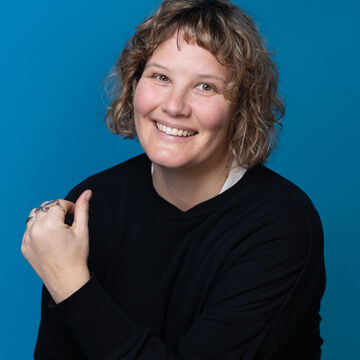

Sonja Ruth Thomsen
Professor, Adjunct
Contact
Bio
BA, 2000, Kenyon College, Gambier OH; Post-Baccalaureate in Photography, 2002, San Francisco Art Institute, CA; MFA, 2004, SFAI. Awards: Ruth Arts Mary L. Nohl Alumni Award, Milwaukee Arts Board New Work Commission, Hermitage Artist Fellowship, artist-in-residence at the Active Archive Residency at the Black Mountain College Museum + Arts Center, and the Josef Breitenbach Research Fellowship at the Center for Creative Photography. Exhibitions: Aperture, NY; Bauhaus Archiv, Berlin, DE; DePaul Art Museum, Chicago; Fonderia 20.9, Verona, IT; Gallery f5.6, Munich, DE; High Museum of Art, Atlanta, GA; Higher Pictures, NY; John Michael Kohler Art Center, Sheboygan, WI; Museum of Contemporary Photography, Chicago, IL; New Mexico Museum of Art, Santa Fe; Reykjavik Museum of Photography, IS; Silverstein Gallery, NY. Publications: you will find it where it is: a reader, Sonja Thomsen, Poor Farm Press; Un' apparizione di superfici, Luca Panaro, Italy, APM editions; "GR-09022017", Fotogalleriet, Oslo, SKREID Publishing; Earth Now: American Photographers and the Environment, New Mexico Press; Orion Magazine. Bibliography: Chicago Tribune, PDN magazine, Art Contemporaries, New City Art, The New Yorker. Collections: Art Institute of Chicago, Beinecke Rare Book & Manuscript Library at Yale University, DePaul University Art Museum, Milwaukee Art Museum, Reykjavik Museum of Photography.
Personal Statement
Sonja Thomsen (she/her) is an artist whose interdisciplinary practice harnesses light as both medium and metaphor, creating immersive installations that blur the boundaries between photography, sculpture, and architecture. Working at the intersection of feminist theory and scientific inquiry, she transforms exhibition spaces into sites of perceptual discovery through installations incorporating materials that shift with viewers’ movement. Drawing from artistic kinship with polymathic women whose voices have been historically marginalized, Thomsen treats wonder as both methodology and subject. She builds images, objects, and video that refract, reflect, and record light while positioning wonder as a feminist act of resistance.